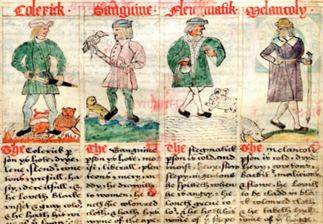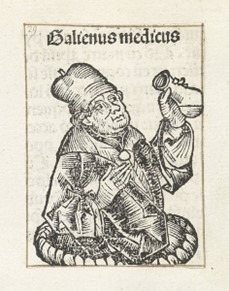historical evolution of rheumatism

Per entendre l’evolució històrica del concepte de “reuma” o “reumatisme” ens hem de remuntar fins a la Grècia clàssica d’Hipòcrates de Cos (460aC-370aC), que utilitzava aquesta paraula com a sinònim del refredat comú. En aquella època predominava la “teoria humoral” com a explicació de l’origen de les malalties: s’afirmava que el cos humà es componia de quatre substàncies elementals anomenats “humors”: bilis, bilis negra, flegma i sang. Un desequilibri (ja sigui per excés o per defecte) d’aquests humors –qualsevol que fos la raó– generava tot el conjunt de les malalties conegudes. Segons aquesta teoria, el cervell era el centre de l’organisme i podia produir els anomenats “7 refredats cerebrals” en enviar la seva “humitat” cap a l’oïda, els ulls, el nas, el paladar, la gola, la medul·la espinal i els malucs. En aquells casos en què existís un desequilibri humoral, el cervell també enviava l’excedent d’humor cap al tronc i les extremitats, produint dolor o tumefacció articular o muscular. No és estrany que el terme “reuma” provingui de la paraula llatina “rheuma”, que alhora baixa del terme grec “ρευμα”, que significa “fluir” o “córrer” (etimològicament propera al verb “rheo” (riu ): l’analogia és clara).
Encara que en els temps moderns aquesta teoria ens pot semblar ridícula o fins i tot pueril, va persistir com a cànon a l’imaginari mèdic occidental fins aproximadament el segle XVI.

humoral theory
The four humors correspond to Hippocratic medicine with the bodily fluids blood, phlegm, gross bile and black bile. During most of the time, it is considered that the maladies are caused by an imbalance between these fluids, and the study of this is due to humoral pathology. The image is an exact reproduction of a manuscript from 1553.
Continuing with the history of rheumatism, Galen of Pergamon (130-216 AD) was the first to use the word “arthritis” to designate the entire set of joint diseases, although without differentiating the causes or their characteristics. Already in Byzantine times, the designation rheumatism was used almost exclusively for gout, according to what can be deduced from the dietary indications of the writings of that time, although the word “gout” was not introduced until the 11th century, coming from Latin gutta, referring to the humor flowing from the joints. As we see, the humoral theory was still in fashion almost 2000 years after its conception.

Galeno de Pergamo
Galen was so important that popular wisdom assigned his name to colloquially designate any doctor. (It should be said that we prefer that to the term “croacher.”)
It is worth highlighting the conception of Avicenna (980-1037) where he spoke of certain “alterations of the skin that affected the joints, tendons, muscles and subcutaneous cellular tissue (inter carnum et cueto)” referring to diseases such as psoriasis, lupus or vasculitis. It was not until the Parisian doctor Guilliaume Baillou (1558-1616) changed the paradigm: he designated with the name “rheumatism” “that disease characterized fundamentally by diseases of the external coverings, especially muscles and joints, even without differentiating between the different causes”, and conceiving rheumatism as a general disease that manifests itself locally, as reflected in his book Liber de Rheumatismo et Pleuritide dorsali.

Guilliaume de Baillou
This was the man who coined the name “rheumatism” attributed to joint diseases.
In later centuries, doctors such as Sydenham (1624-1689) and Schönlein (1793-1864) would more precisely define pathologies such as gouty arthritis and its relationship with the articular deposition of uric acid microcrystals and the classic definition of Rheumatic Fever. Later, in the 18th and 19th centuries, efforts were made to try to frame the concepts of acute and chronic rheumatism, until reaching the names in force today.
Therefore we observe that the concept of rheumatism has been changing and adapting to the knowledge of each era (the ‘zeigeist’ or “spirit of the time”). Over the years the meaning rheumatism or rheumatism has passed into the collective unconscious as a simultaneous synonym for joint pain and swelling, and even in recent years even as a synonym for elevated erythrocyte sedimentation rate (ESR) or possibility of Rheumatoid Factor. (“they found rheumatism in my blood”)
Dr. Javier García Miguel
